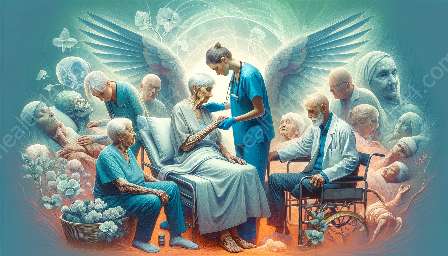Introduction to Gerontechnology
Gerontechnology focuses on creating technologies that enhance the lives of older adults, enabling them to age in place with independence and dignity. It encompasses the intersection of geriatrics and technology, aiming to improve the well-being and quality of life for seniors.
Challenges Faced by Older Adults in Rural and Remote Areas
Living in rural or remote areas can present unique challenges for older adults, including limited access to healthcare services, social isolation, and inadequate support systems. This can result in barriers to receiving timely monitoring and care, leading to potential health risks and diminished well-being.
The Role of Technology in Remote Monitoring and Care
Technological advancements have the potential to bridge the gap in remote monitoring and care for older adults, especially in rural areas. With the integration of innovative solutions, such as telehealth, wearables, and smart home devices, older adults can receive proactive and personalized care without the need for frequent in-person visits.
Telehealth
Telehealth platforms enable healthcare providers to remotely monitor and communicate with older adults, facilitating regular check-ups, medication management, and consultations. This virtual approach eliminates the geographical constraints of access to healthcare services, making it particularly beneficial for individuals residing in remote areas.
Wearables
Wearable devices, such as smartwatches and fitness trackers, offer real-time health monitoring capabilities, including heart rate, activity levels, and falls detection. These wearables provide valuable insights into the well-being of older adults, allowing caregivers and healthcare professionals to intervene promptly in case of emergencies or health anomalies.
Smart Home Devices
Integration of smart home devices, such as smart sensors, voice-activated assistants, and remote monitoring systems, enables older adults to maintain a safe and independent lifestyle. These devices can alert caregivers or emergency services in the event of a fall, sudden changes in activity patterns, or deviations from regular routines, providing peace of mind for both older adults and their loved ones.
Promoting Aging in Place
Technology plays a pivotal role in promoting aging in place for older adults in rural or remote areas. By facilitating remote monitoring and care, technology empowers older adults to remain in their familiar environment while receiving the necessary support to manage their health and well-being effectively.
Benefits of Technology-Enabled Care
Empowering remote monitoring and care for older adults through technology yields various benefits, including improved access to healthcare services, enhanced social connectivity, and early detection of health issues. Moreover, it fosters a sense of independence and autonomy for older adults, promoting an active and fulfilling lifestyle.
Overcoming Technological Barriers
While technology holds immense potential in remote monitoring and care, addressing the barriers associated with digital literacy, accessibility, and affordability is crucial. It is imperative to ensure that older adults in rural areas have the necessary support and resources to leverage technology effectively for their health and well-being.
Conclusion
Technology serves as a powerful enabler in facilitating remote monitoring and care for older adults living in rural or remote areas. By harnessing the capabilities of gerontechnology and aligning with the principles of aging in place and geriatrics, innovative solutions can empower older adults to lead fulfilling lives while receiving comprehensive and personalized care, regardless of their geographic location.


